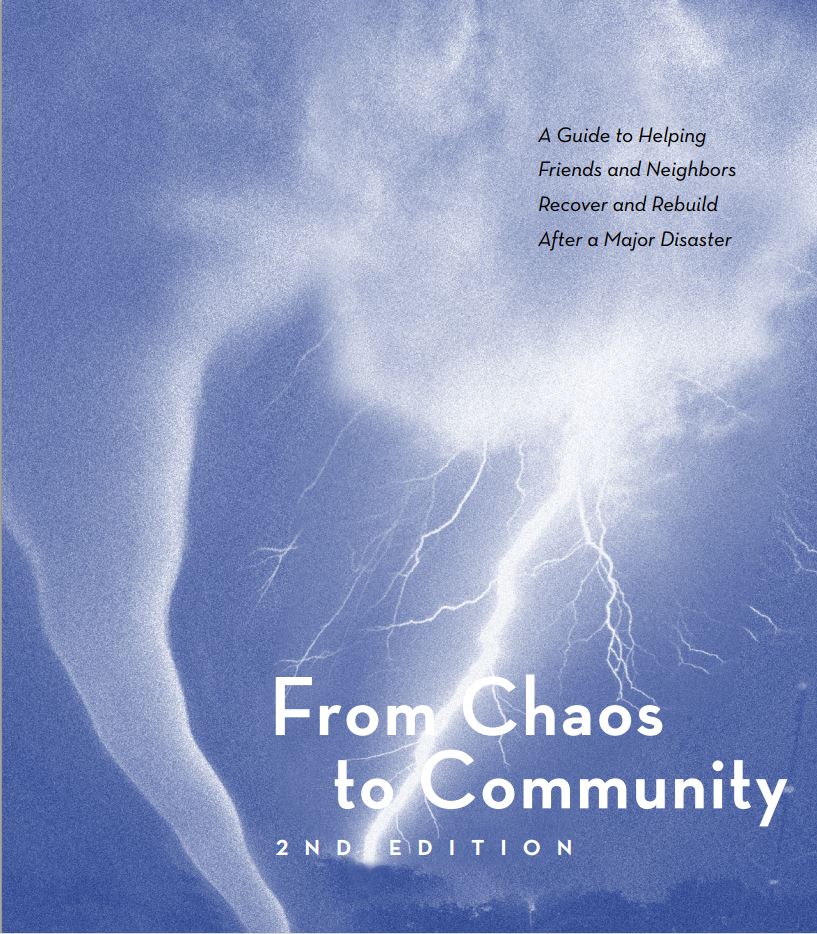Disaster Philanthropy Playbook

From Chaos to Community: The Difference of Elected Officials in Recovery
Talk to Ursula Hyman and she’ll tell it to you straight.
“The early days and weeks following the disaster – in my case a wind-fed wildfire that destroyed my Altadena-area neighborhood along with hundreds of other homes in surrounding neighborhoods – were a blur of chaos and small comforts, crossed signals and incredible caring.”
Hyman, whose home was the only one that survived on her block, stepped up and chaired the Eaton Canyon Recovery Alliance. ECRA members sought to retrieve from the flames as much normalcy as possible and became a safe haven from which neighbors could plan a pathway back to community.
“One of the best lessons that survivors of the Altadena fires in the 1990’s learned,” Hyman reflected, “was how critically important it was for Los Angeles Supervisor Mike Antonovich – an elected official with enormous regional power and in whose jurisdiction the fire had occurred – to appoint one of his most senior deputies as the designated red-tape cutter, or ombudsman.”
The deputy carried the weight of the supervisor’s authority and power. He used this to convene county agency leaders, to facilitate cross-department rather than silo-specific responses to local needs, to thwart finger-pointing, and to mitigate the attitude of “it’s not my department’s role” that can arise in budget-strapped and power-conscious bureaucracies.
“The person appointed by Supervisor Antonovich brought an extensive network of relationships, a history of working with all levels of government, and empathy for the myriad rebuilding problems facing constituents.”
Here are examples of the ways in which the ombudsman helped survivors overcome specific difficulties:
- Revised zoning and building codes concerning such issues as fault lines, flood plains and required setbacks now applied to rebuilding in burn areas. A new earthquake fault, for example, had been discovered after Eaton Canyon and an adjacent neighborhood were initially developed. Had ECRA been unable to work out a liability waiver through the ombudsman, these new building codes would have prohibited many homeowners from rebuilding.
- Laws dealing with environmental issues like water run-off protection imposed on neighborhoods like Eaton Canyon that border public lands affected neighborhoods needing to rebuild. Having an effective spokesperson from the local community working with ECRA made a difference in finding legal, practical ways to apply new standards.
- Changes in road requirements designed to facilitate emergency vehicle access into neighborhoods presented property owners with significant financial burdens not covered by their household insurance. Homeowners worked with the ombudsman to identify appropriate funding alternatives and ways to spread the costs through an annual assessment.
- Changes in building standards and codes instituted long after the neighborhood’s initial development stood to influence the size and cost of new structures. New setback requirements, for example, threatened to make it impossible to rebuild on the same pad area, leaving homeowners with smaller homes than they had before the disaster. Similarly, changed building code requirements resulted in a higher cost per square foot than some homeowners could recover through insurance. No one wanted safety to be compromised, so creative problem solving was required. The ombudsman helped facilitate effective interaction with local zoning appeals boards on building code variances in ways that helped board members consider the special circumstances that occur in the wake of a fire catastrophe.
With the assistance of a well placed insider helping the community, the most critical issues they faced were managed legally, respectfully and safely. When homeowners began rebuilding their own homes, the proper policy considerations had been made for the scope and unexpected nature of the disaster and the rules were clearer. The community re-established itself, eventually emerging from the chaos and settling into a new normal.
“Given the many challenges we faced,” Hyman concluded, “having a powerful elected representative’s deputy serving as ombudsman made every difference.”
Paul Vandeventer, President & CEO of Community Partners, worked with Ursula Hyman, a retired senior partner with the law firm of Latham & Watkins, and with numerous other fire survivors to author From Chaos to Community: A Guide to Helping Friends and Neighbors Recover and Rebuild After a Major Disaster.